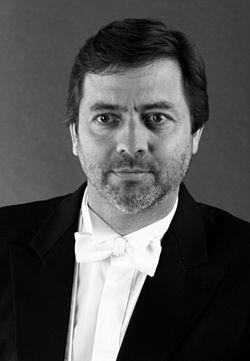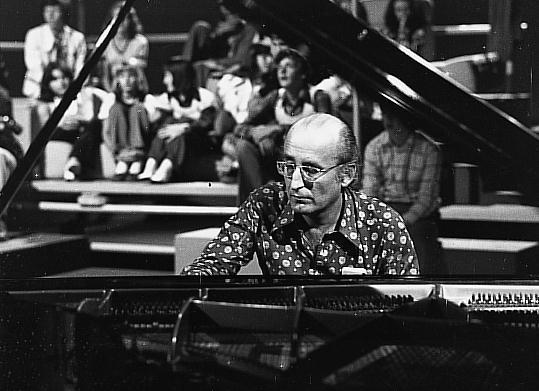1000 PLUS SELECTED WORKS FOR WIND ORCHESTRA AND WIND ENSEMBLES
1000 PLUS AUSGEWÄHLTE WERKE FÜR BLASORCHESTER UND BLÄSERNSEMBLES
1000 PLUS OEVRES CHOISIESPOUR ORCHESTRA A VENT ET ENSEMBLES A VENT
1551 – 2009
Here is a book which every library, every conductor and wind ensemble director, and most players should have in their library, the latest 8th update by Felix Hauswirth to his masterly reference directory to repertoire. It is available in hard copy or on line from
http://www.ffmusicians.com/suche/?suche=hauswirth&x=0&y=0
Published by Ruh Music AG
Soodstrasse 53
8134 Adliswil/Switzerland
www.Ruhmusic.com
This invaluable book, the third edition that I have purchased, contains more than 1000 works from more than 500 composers from 42 different countries. Felix writes I am aware that the list does not contain every “important” work, but it certainly reflects my personal preferences.
The bulk of the book is given over to a listing of the works with details of:
Composer – date – nationality – work – orchestration – date – category – difficulty - publisher

There are a number of extremely useful appendices and cross reference tables:
Listing of solo works by instrument
Listing of works with voice and/or chorus
Listing of works by country
Listing works by date of composition
Appendix 1 abbreviations
Appendix 2 instrumentation, categories and levels of difficulty
Appendix 3 nationalities
Appendix 4 publishers
A REPERTOIRE RAMBLE A - M
The listing is a fantastic resource, full of information, but more than that, it serves as an aide memoire for research, especially into composers who for one reason or another have not caught the commercial eye and have slipped off our radar. This publication gives me a chance to ramble through repertoire ideas and remind myself of neglected works. I will complete this ramble in my next Homepage, probably emerging in August, N – Z.
A is for AAGAARD-NILSEN
The very first entry is Torstein Aagaard-Nilsen
http://www.torsteinaagaardnilsen.no/index.php/list-of-works/wind-band
He is far better known among brass band colleagues, who commission, play and record his works regularly; I have written about some of his wind works for my webpage. Felix’s entry for Torstein is Arctic Landscape of 1992; a brief list of his other works include:
1992 Arctic Landscape
1994 Concerto for cornet and band
2002 Pentagram
2003 Cantilena for trombone and band
2012 Panorama
2013 Ljodgata
2015 Dirty Dancing
BASSOON CONCERTINO
The importance of WASBE or someone maintaining a listing of works played at Conferences is underlined by several omissions of works which I consider to be minor, and sometimes major, masterpieces. I would recommend the ANDRIESSEN, JURIAAN : CONCERTINO FOR BASSOON AND WIND ENSEMBLE, suggested by Bob Garafalo in his very good joint presentation with Jim Croft on chamber music repertoire at a WASBE Conference in 1989, played here by the Banda Sinfónica de Córdoba, Argentina and scored for bassoon with wind dectet.
SPANISH REPERTOIRE
Also in the “A”s is Bernado Adam Ferrero, and I am immediately reminded of the poverty of my article on Spain in my repertoire section, which in fact wasnothing more than a brief introduction to two works by Rodrigo and Alarcon, and was headed work in progress. I have been listening to Homenaje a Joaquin Sorolla by Bernardo Adam Ferrero, while reading about his career and the incredible C.I.B.M.
HOMENAJE A JOAQUIN SOROLLA will give you a fine idea of the music of this composer, and also the amazing level of playing of Spanish bands, highlighted in the C.I.B.M., CERTAMEN INTERNACIONAL DE BANDAS DE MUSICA held in Valencia each July, and browsing here will lead you to many fine Spanish works.
Further down my attention was taken by Teo Aparicio-Barberan, another prolific composer of the current Spanish school, and also a fine conductor. His entry led me to a performance which he conducts of SYMPHONY NO 6 by Gennadi Chernov, born in Tashkent in 1937 and I have been listening to the premiere of this, conducted by Teo, an expansive 30 minute wind orchestra successor to the epic Tchaikovsky, Borodin and Miakovzky Symphonies. For Aparicio-Barberan himself, Felix lists his first two symphonies; I have listened to his work for solo trumpet and band THE PRIEST OF THE SEVENTH DAY which is a seventeen minute concerto, new to me, dramatic an lyrical by turns. Teo is obviously another Spanish composer for me to try to assess.
ROSS LEE FINNEY
As Youtube says, Ross Lee Finney's music and reputation as a composer have now fallen into almost total eclipse, but during his heyday, Finney was widely and highly regarded .. Felix lists his Saxophone Concerto and I wonder how we would react to Skating on the Cheyenne, a work which used 35 years ago to have quite a reputation. On You Tube you can listen to his Symphony no 2 which should whet your appetite for exploring his music.
GORD – BENNETT - BRIDGE

It is good to see a strong entry for Adam Gorb; I would add several other major works, especially Eternal Voices which is a wonderful choral work, and his Saxophone Concerto should perhaps be included. I think that Adam made a major statement with FAREWELL with its Mahlerian structure, its orchestra divided into two sections, perhaps representing Ying and Yang, its crazy Klezmer dance, eventually all reconciled into a Mahlerian coda; an emotional and technical challenge but worth tackling.
Still in England, I would certainly include Richard Rodney Bennett’s Reflections on a 16th Century Tune, a wonderful work for dectet 2222:2 with the usual doublings, transcribed flawlessly by the composer from his original for string orchestra.
UPDATE ON PAGEANT OF LONDON
One update for your records, Pageant of London by Frank Bridge, a great addition to the early 20th century band repertoire of Holst and Vaughan Williams, is now published at last by Faber.
The book reminds me about Ida Gotkowsky, a prolific French composer, a student of Messiaen, whose works are on a large scale to fit those massive bands of France.
On Youtube there is a fine performance of the third movement of CONCERTO POUR GRAND ORCHESTRE D’HARMONIE which will give a good idea of the brilliance of her scoring. Is she a neglected genius?
GREGSON MASTERPIECE FOR CHOIR
I think that the most significant work by Edward Gregson is his heart felt Missa Brevis Pacem for SSA choir, preferably a boys choir, a solo for boy soprano and baritone. The GLORIA is the only movement on Youtube, played here with piano accompaniment but I hope this will whet your appetite; there is a refreshing spontaneity about this music, and the boy soloist’s Benedictus is a chart-topping number.

Friedrich Gulda is listed with his CELLO CONCERTO, that outrageous amalgam of jazz, Viennese Kitsch and Austrian folksong, but his two jazz piano concertos need to be noted here. One concerto as I remember is the only concerto in the world in which everything is improvised and only the cadenzas are notated. They are published by Papageno Verlag, Weinbergers
LOST TRUMPET WORK FOUND
Karl Amadeus Hartmann was one of the most interesting composers to work under the Nazi regime, and like Boris Blacher never wavered in his implacable opposition to the regime. His music needs a wider audience, none more so than the Fifth Symphony which first saw light as a Concertino for Trumpet and Wind in the early thirties. In 1949, it was revised as Concerto for Wind Ensemble, Double Basses and 2 Solo Trumpets, and a further revision added cellos and subsumed the solo parts into the orchestral texture. It was thought that the original trumpet work was lost, but recently it came to light, and has been published by Schotts, a “new” Concertino for Trumpet and Seven Instruments.
Hans Werner Henze is represented by three works, including the bras sband work Rags and Habaneras arranged for wind by the Luxembourg composer, Wengler of whom more anon. I would certainly add in his exquisite Muses of Sicily for wind, two pianos and choir, which I first came across at Northwestern University over thiry years ago and still remember enthusiastically.
I wrote to Henze to ask for a wind work, and he recommended his student Marcel Wengler, who sent me his Versuche über einen Marsch, a set of “Experiments on a March” with wry looks at Ravel, Stravinsky, Mendelssohn among others, very much neglected in favour of the hilarious MARSCH.
I am surprised that Kenneth Hesketh’s MASQUE as it is a very useful short work to use as an overture. A work of significance by Ken is A Cloud of Unknowing, a ravishing extension of his wind orchestral writing in Diaghilev Dances, while in DANCERIES 11 is again in his populist mode of writing. I wondered why this was not included but of course it did not appear until 201.
BALLET FOR BAND
I was once taken to task over my pontificating on repertoire, and a German colleagues pointed out that “One man’s meat is another man’s poison”. Worth mentioning Stephen McNeff’s GHOSTS, a fine set of variations, a sort of ghostly Enigma Variations for wind band which I find very inventive and quite challenging. Thinking of Variations reminds me of Chris Marshall’s splendid
Finally a misprint, the only one I have spotted. Theo Musgrave should be Thea. This book is a triumph. Enjoy is, and good browsing.